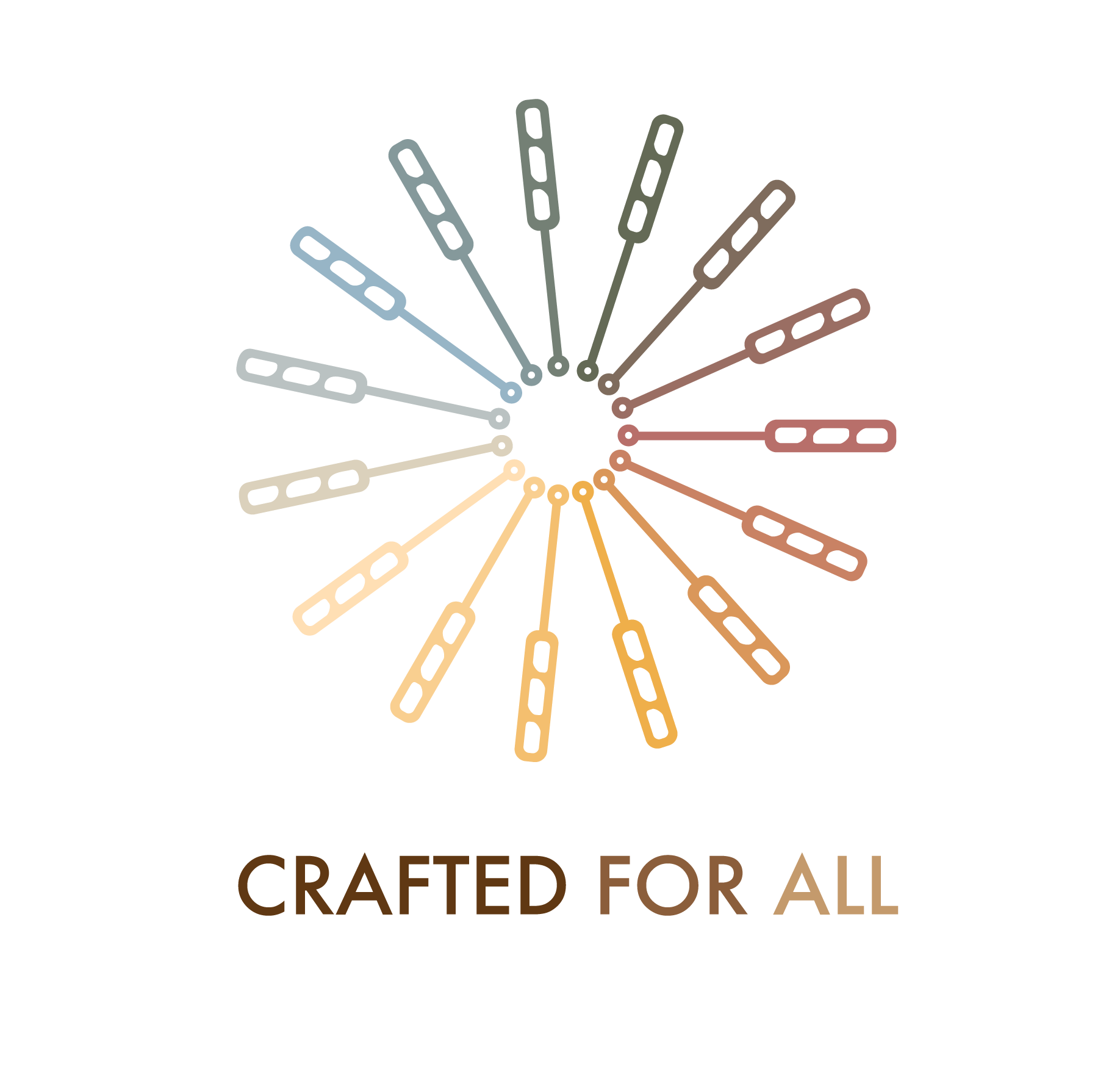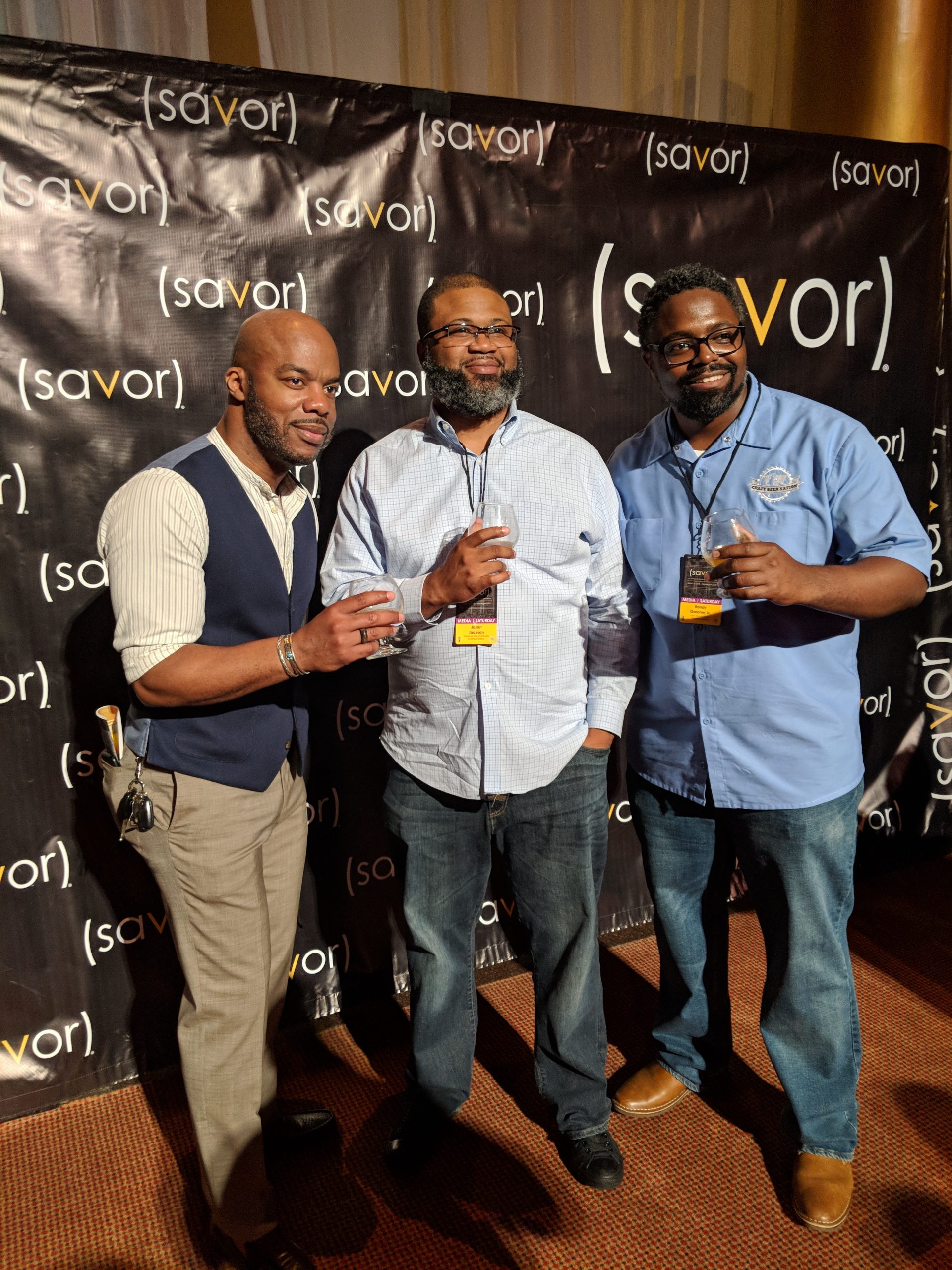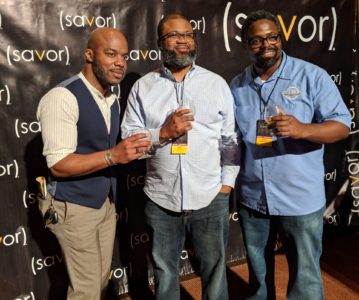So I have charged out of the gate with a gross overstatement. That’s par for the course in the clickbait era, right? Following up that overstatement with two clichés and a rhetorical question, however, is just a bit of snarkiness. The point (there is one) that I want to acknowledge from the outset is that not all of us want to diversify craft beer. That is, many of us agree that diversity (noun) in craft beer is an admirable end, but also believe that the effort to diversify (verb) craft beer is one that no one should be particularly concerned with (and certainly not feel responsible for) undertaking.
I have been researching and writing about beer and American culture for more than 7 years as one of the very lucky handful of academics who have gotten away with making beer the center of our scholarship. I’ve also been privileged to be included in the growing number of serious conversations about race and ethnicity in craft beer, and disappointed to be increasingly challenged with the question, “Why should we care?” Though I have given this blog entry a title that suggests we’ve all gotten beyond this question, I want to pause for at least a moment to hazard an answer.
Why should we care who makes/drinks craft beer?
There is a growing list of practical responses to this question that touch upon important considerations like untapped markets, the dormant potential for new ideas and contributions to brewing practice, and the importance of extending the scope of community engagement. These are all critical. But I will give space here to a more challenging position–one that has, for many years, been the foundation of my unwavering love of craft beer culture. We should care because we can. We should lead because we are able.
As an industry that has cultivated an ethos and built a mythology around navigating the status quo in thoughtful, challenging, and sometimes outright resistant ways, craft beer is unique. Craft beer continues to do what conventional wisdom says it cannot (remember, that bubble was supposed to burst about 2,500 breweries ago?). Diversification defines craft beer where most other industries are being swallowed by the twin forces of contraction (the trend toward fewer firms in an industry) and consolidation (the shift of market share toward the top few firms).
Among the very limited number of brewers I have had the pleasure to meet, I have observed a truly inspiring level of energy and action. Sean Lilly Wilson of Fullsteam Brewery and Adam and Eric Marshall of Marshall Brewing Company were instrumental in changing the antiquated liquor laws in their states that not only suppressed the enormously positive economic impact that craft beer has on state and local economies, but were also stubbornly rooted in classist and racist assumptions about pathological alcohol consumption. Erik Lars Myers of Mystery Brewing Company and Lee and Doug John of Apocalypse Ale Works tell truly remarkable stories of their community-built breweries, of greater access to the kind of entrepreneurship that galvanizes communities from the inside out. Collin McDonnell of HenHouse Brewing and Calder Preyer of Preyer Brewing Company operate with a level of critical reflexivity, transparency, and awareness of industry dynamics that empowers us as consumers. Brewers raise countless dollars for social change, make statements they do not have to make, and invite us into their taprooms and onto their brewery floors where we authentically connect–often without giving a second thought to how natural these connections really are–with people we would otherwise never have the opportunity or inclination to speak to.
I want to go on, but I need to get to where I was going (remember the title?), and to be 100% honest, the praises of the craft beer industry/movement have been more than adequately sung. So I will cut this revelry short by saying, craft beer has already demonstrated a give-a-sh*t quotient that far surpasses what Americans have come to expect of our business community. It has opened doors, pushed boundaries, forged collaborations, and asked questions that others have not dared to ask. It has in no way been perfect, but it has been willing–willing to self-critique, willing to dream daringly, and willing to try. So, if any industry can rise to the challenge of “being the change we want to see in the world,” I believe craft beer can…and should.
So How Do We Diversify Craft Beer?
I am happy to write that more often than not, the growing number of serious conversations about race and ethnicity, gender, and socio-economic background in craft beer have concluded with a genuine desire to make brewery floors, tasting rooms, bottle shops, beer dinners, and even professional associations more diverse. However, in these same conversations, we seem to habitually gloss the not insignificant issue of overcoming the biggest challenge to achieving this goal. How do we do this–specifically without being stereotypical, condescending *ssholes?
As queer, black, woman (that’s right, triple threat y’all) my experiences in craft beer culture have run the gamut from transformatively-inclusive to terrifyingly-hostile. But when faced with this question, I have to admit that I have been largely stymied, offering remarkably unhelpful suggestions like, “you know, just be cool.”
The recent turning point in my thinking about effective, inclusive, ethical and authentic efforts to diversify craft beer was reading one of Julia Herz’s Communicating Craft articles on the Brewers Association website, Today’s Craft Beer Lovers: Millennials, Women and Hispanics. While this is a data-driven piece for an industry audience, I think it contains one of the most broadly applicable, succinct, and helpful pieces of advice for those committed to diversifying craft beer that has been published to date. [I am paraphrasing] Don’t overtly target underrepresented populations, work on eliminating the perceived barriers to entry into the world of craft beer.
This has been an enormously helpful starting point, but I think it is also one that justifies a slight clarification. Herz’s use of the term “perceived barriers” is important, as it draws attention to the fact that the barriers that keep some out of the craft beer community may not be perceived at all by others–particularly others that are comfortably on the inside of the craft beer community. Too often we allow the fact of these differences in perception to lead us to the conclusion that the barriers are not “real.” As I continue to refer to “perceived boundaries,” in this blog post, I want to make it clear that I consider them to be very real and to have very real effects and consequences. Which is to say, that the suggestion that the lack of diversity in craft beer would be “fixed” if underrepresented populations would just “suck it up,” is a flaming pile of rancid donkey sh*t that I really have no time for.
I do not profess to have “the answers.” But I am invested in the process of problem solving. Many of us (and I may be one of the worst offenders) have invested considerable time and effort into naming, exploring, critiquing, and speculating about the causes of craft beer’s cultural homogeneity. We have been rather successful in establishing a need for change and have adequately made the case for expecting positive outcomes from this change. We have been significantly less successful in developing practical strategies for making this change (and I am not talking about making pink beer or angling for product placement in hip-hop songs). Below, I make an effort to change this by offering five suggestions for those committed to diversifying the world of craft beer. Yes, I have gone listicle.
Suggestion 1: Don’t assume you have created an inclusive space just because you are nice.
This is a difficult place to start. Because, I am challenging the commonly-held assumption that being a “good gal/guy”, being decent and kind, is equivalent to being diversity-minded. Unfortunately, it is not. This isn’t a complaint about good gals/guys. In my experience craft beer is an industry that has a disproportionally high percentage of these folks. Because of this, however, craft beer culture is particularly susceptible to overlooking the unconscious and unintentional ways it builds cultural barriers to entry. As Ms. Herz has already helped to establish, diversifying craft beer should not be about overt recruitment of underrepresented groups. I will add here that it is also not about overt bias, -isms, or -phobias directed toward these groups. If it were, frankly, there would be little to do. Diversifying craft beer will require making an effort that is a bit trickier than laying off the n-word. It will require changing things we’ve often never thought to question.
Suggestion 2: Do not make assumptions about expertise.
One of the ways that the craft beer community most consistently engages in the kind of unconscious barrier building I reference above is by way of what I call the “economy of expertise.” Access to the varied pockets of the craft beer world, from festivals and tasting dinners to homebrew clubs and competitions, is often granted on the basis of perceived knowledge and experience. Deploying the right vocabulary (whether or not you actually know wtf diacetyl tastes like), knowing one’s glassware, and/or having the name of a couple of rare seasonal releases on hand are, regretfully, dolled out like so many secret passwords.
More to the point, I believe many in the craft beer community make assumptions about who is likely and who is unlikely to possess this valued expertise more often than we realize or would like to admit. That is to say, when expertise operates as a key to the clubhouse (a dynamic I find extremely problematic), and certain people are regularly assumed to lack that expertise, craft beer spaces look less like social hubs for our diverse communities and more like Augusta (if hipster lumberjacks took up golf).
I don’t know how many times I have been greeted with a somewhat baffled, “Can I help you?” when entering an unfamiliar beer bar. This isn’t the friendly, “Can I help you?” that is usually coordinated with a menu being placed on the bar or an industrious barkeep expectantly pulling a clean pint glass from rack–I get plenty of these too. But the “Can I help you?” that I am talking about here more accurately translates to, “Are you lost ma’am?”, “No, we aren’t hiring”, or “We don’t have Michelob Ultra here, keep moving please.” I also don’t know how many times I have been backhanded with the question, “Do you like light or dark beer?” after taking my time with a beer list and watched other unfamiliar guests be greeted with specific suggestions or the heads up that something rare is on tap. These things have happened enough that I’ve developed something of an inside joke with my craft beer friends–they laugh after witnessing or hearing about one of these encounters and ask, “Oh no, did you have to put your craft beer d*ck on the bar?”
Having to constantly “whip it out” –to name drop or casually reveal my “credentials”–to gain access to the kind of service–the knowledgable banter, the adventurous taster meets tap handle curator dynamic–that makes craft beer so much more than a simple retail purchase is annoying, exhausting, and belittling. It has been more than enough for me (someone who has already committed to a long-term relationship with craft beer) to avoid establishments where I have this experience more than once (no matter how nice people are). But as obstacles to building that first connection, to bringing new drinkers to craft, the assumptions made as part of the economy of expertise can be formidable, more than enough to turn people away–particularly if they get the sense that these kind of assumptions are a product of their possession of breasts or darker skin.
I believe we need to seriously question the practice of allowing expertise to be one of the dominant means of entrance to cultural spaces organized around the enjoyment of craft beer. But if we are going to allow expertise to continue to be a cultural currency, we can’t make assumptions about anyone’s individual wealth.
Suggestion 3: Be willing to accommodate those who do craft beer differently.
The value that many of us in craft beer have placed on expertise (we love our “geekery and gadgetry”, as I like to say about myself and fellow homebrewers) has resulted in a number of preferred “performances” in craft beer culture. That is to say, we’ve adopted a number of common behaviors and attitudes that in many ways define us. More importantly, being unfamiliar with these practices or simply failing/refusing to adopt them can leave drinkers on the outside looking in or even make them the subject of ridicule. Lager drinkers have intermittently occupied the short end of this stick.
I will readily admit, I am invested in the craft beer community’s most commonplace performances. I aggressively avoid “corporate beer.” I invest time, energy, and money in tasting as many new things as I can. I buy beer in bottle shops rather than grocery stores. I show up early when bars put on kegs of rare offerings, advocate for casks and randalizers, politely request that my beer not be poured in chilled glasses, get excited about imperial things, and generally consider all beer drinking to be a “learning experience.” But it’s only recently that I have stopped to consider how many of these practices are a result of my conditions of privilege, how arbitrary they may seem to an “outsider” or “newcomer”, and how remarkably rigid they are.
Suggestion 4: Be an Awesome Ambassador
About a year ago, I visited friend’s church for the first time. Grace Episcopal is a small, rural congregation in central Virginia, and it was with these folks that I experienced my first Episcopalian church service. It was not completely unlike the first Catholic mass I attended many years before, in that it was unfamiliar to the point of being alien–I grew up attending southern, black, Baptist churches. In both cases, I felt like an interloper, conspicuous in my ignorance of when to stand and when to sit and when to kneel, when to speak and what to say, which text I should be referring to, and generally how to comport myself.
But the experiences of visiting these two new and unfamiliar worlds were also substantively different because of the actions of one congregant at Grace. It wasn’t until I was driving back home that I realized that she had subtly moved down the pew in front of me to put herself in my line of sight, that the “coincidence” that she caught my questing or worried glances and quietly pointed out passages by lifting her own materials high enough for me to see them was no coincidence at all. She was, without being pushy or presumptuous an attentive and effective ambassador for the congregation. And I sincerely wish I would have realized what was going on in the moment, I would have thanked her profusely, because my comfort on that day (and my comfort in making a subsequent visit) were largely the result of her generosity.
Many of us in craft beer are accustomed to being lecturers, tour guides, gurus, and friendly adversaries, but we are far less often careful and attentive ambassadors–a role that requires more listening than is customary for a consumer culture that is in many ways defined by how much it talks to itself.
Suggestion 5: Engage in Uncommon Community Partnerships
My final suggestion is to find uncommon ways to do something that craft beer has traditionally done very well–develop partnerships (formal or informal, temporary or permanent) with other groups, businesses, and organizations. I’ve already seen many wonderful examples–beer dinners, food truck rodeos, yoga sessions, live music festivals, art openings, knitting circles, running club meet-ups, vintage pop-up stores, roller derby training, farmers markets, CSA pick-ups, and more. If it could be quantified, my guess is that these kinds of activities already do much to expand the customer base for many craft breweries. I would also hazard a guess that, on average, craft beer has barely begun to explore the potential to expand and diversify with these kinds of activities.
The fact is craft beer community partnerships are often drawn from the same demographic well. That is to say, it’s a good bet that most of the partnership opportunities I named above appear in one of satirist Christian Lander’s books. Forming uncommon partnerships may require a leap of faith, a cold call, an awkward first meeting, and the accumulation of a couple of “no’s” . These aren’t small things, I realize, but I suspect their costs will be negligible in comparison to what craft beer stands to gain in return.
—
Consumer cultures, no matter how vibrant, are the products of a profit imperative. I realize that this inevitably places limits on what we can expect any industry to take up, to invest in, to champion. I am a realist. But I also question the logic that assumes that anything that an industry and its consumer culture take up must be realized in revenue to be deemed worthwhile. I am also an incurable idealist. In this conversation, as in many things, there are shades of gray to consider and nuances to be explored. I hope these thoughts have the effect of expanding the gray, multiplying possibilities, and keeping this important conversation going.
I would like to sincerely thank Dr. Annie Sugar for turning me on to Julia Herz‘s thoughts on Embracing Diversity in the Beer Biz. These thoughts, like so many of Ms. Herz’s, are interesting and well-informed and consequently, inspired me to write this blog entry. Cheers to you both!


